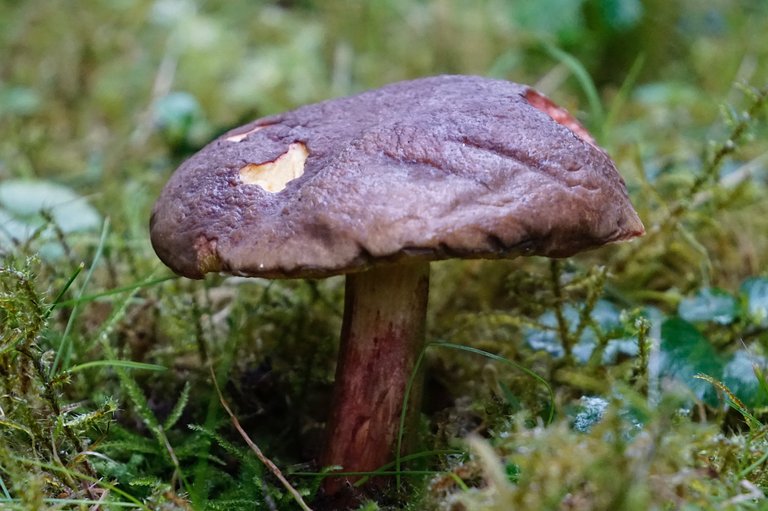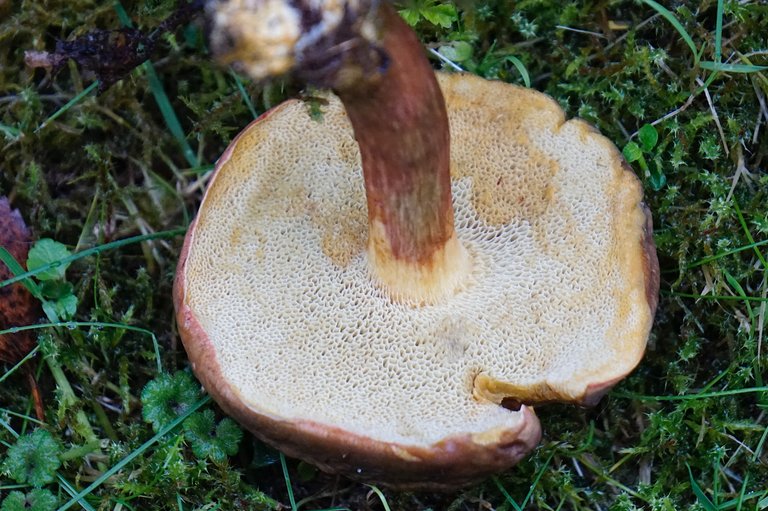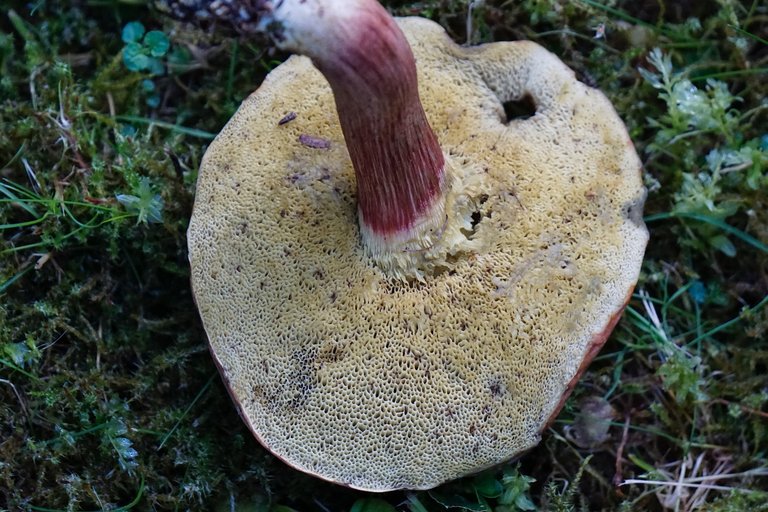Red Cracking Bolete (Xerocomellus chrysenteron)
Hey everyone, I would like to wish you a great start to the new weekend and hope you have a day that has brought some interesting experiences into your life! In this article I would like to introduce a mushroom in more detail and hope you are able to expand your knowledge a bit.
Pictures of Red cracking bolete can be seen here which is also known under the scientific name Xerocomellus chrysenteron and it is a rather more frequent fungus which is mainly found in coniferous or deciduous forests and is relatively undemanding when it comes to the environment. It is important to mention that it is an edible mushroom which can be of interest especially for beginners when collecting, but it should be noted that the appearance can vary greatly, which therefore often makes it particularly difficult to determine. Especially the Red cracking bolete is widespread in Europe where it can be found in large quantities depending on the area and the season begins already in the summer and stretches until the end of the year where it can still be found partly during the cool times and the most frequent partners of the confusion include mushrooms of the same genus. The most important characteristics include the stem which has a brown or red color and if you try to determine the fungus based on the smell, you will not notice any special features and it is very inconspicuous and neutral. A more striking indication whether it is really this fungus is when the meat discolors if you should hurt it and at the beginning it has a light color and then turns blue and this can also be seen with the lamellae and a good help for determining can be if you slightly squeeze the lamellae and then observe whether they change or not. While the hat has a rather constant color, the slats change with increasing age and are still white or yellow in young specimens and discolor over time and take on a strong yellow or green tone and I have taken pictures of different specimens where this property probably comes into its own best. As always, I would like to mention at the end that people should always be careful when searching and if a certain fungus is unknown or if you are undecided whether it is the desired one, you should better leave the specimens or get additional advice to avoid complications!
Thank you very much for stopping by and I hope you could learn something new about nature! I captured these pictures with my Camera Sony Alpha 6000 plus 55-210 mm lens.



I have seen this mushroom before, people don't like it very much. I don't like it that much. You wrote well about it.
Thanks for stopping by and the feedback!
Another post about mushrooms today, every time I see your posts I learn something new. Honestly, I don't like this mushroom. Then you wrote about it well.
It motivates me a lot to read that you appreciate what I do and can learn new things through my contributions :)
This mushroom is edible, very good. It can be beneficial for the body and can satisfy appetite
Happy to read your comment!
Thank you so much dear @qurator @ewkaw
Quite the first time I will be leaning about this mushroom and it is really quite interesting to learn about this I must confess also
Great to see that you can learn new things through my contributions :)
Saudações, isso é bastante desconhecido para mim, é muito estranho
Happy that you were able to learn something new dear @cositav
https://x.com/lee19389/status/1845134573035753618
#hive #posh